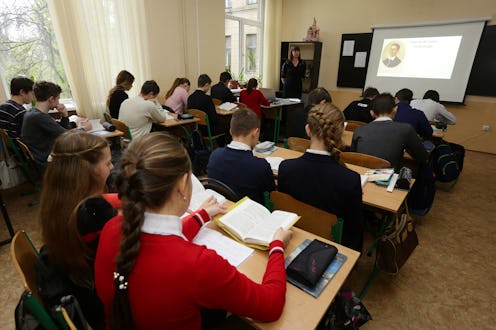News
Youth Vote May Not Offer As Much Hope As We Think
After the Republican candidate Donald Trump was announced as the next U.S. president early Wednesday morning, a wave of despair fell over many discouraged Democrats, moderate Republicans, and Independents alike. Soon after, a digital map of millennial generation of voters went viral, offering hope to those despondent over the election of Trump, a man known less for his policies and but his consistent commitment to insulting minorities, immigrants, women, and people with disabilities. Basically, the color-coded markings of the info-graphic suggested that if only millennials voted Hillary Clinton would have won by a landslide (with 504 electoral votes to Trump's 23), and America would have its first female commander-in-chief.
Let me lead my point by emphasizing that hope is good, important, and crucial for survival in times of fear and potential upheaval. We should drink it in and breathe it as we go forward into political action.
However, as many politically engaged people are already acutely aware of, the fact that millennials aren't to blame for the outcome of the 2016 election shouldn't allow young people to rest on the laurels of the future for a few reasons. For one, the map didn't take Generation Z into consideration, the children and teenagers roughly born between the mid 1990s and 2010. These are the future (or first time) voters who will now be exposed to a Trump presidency, and unsurprisingly, there are a variety of ways this next generation will absorb his presidency. This is to say, the current division of America will not immediately dissolve based on age if we don't do the work.
Within the long two days since Election Day, there are already reports of children being harassed by pro-Trump classmates who have internalized the ideals of our president-elect. In one alarming instance on Wednesday, it was reported by the Detroit Free Press that Royal Oak Middle School students shouted "build the wall" during lunch, which sparked understandable concern for the potential bullying and safety of marginalized kids.
Another equally terrifying instance involved the discovery of racist graffiti at Maple Grove High School in Minnesota on Wednesday, where students wrote "Make America Great Again," "Whites Only," as well as a handful of other racist slurs in the boys bathroom. The Maple Grove police have confirmed that an investigation into the source of the graffiti is underway. "The tweet you may have seen of a racist message scrawled in a school bathroom is real and we are horrified by it," Barbara Olson, Osseo Area Schools (which includes Mappe Grove) Community Relations Director said.
Back in early October, the publishing company Scholastic held a fake election for children, and the results showed that children preferred Clinton as president by 52 percent to Trump's 35 percent (with the other votes split between Gary Johnson and Jill Stein). Since the election results were announced, teachers and parents across the nation have shared ways to soothe and talk to kids about a Trump presidency, particularly focusing on immigrant children who fear deportation or worse. In light of the deepening divide that's spilled over to children and teenagers, it's crucial that we understand not only how to soothe the young people who are afraid or discouraged by a Trump presidency, but also how to address the hatred espoused by some of those who look up to him.
